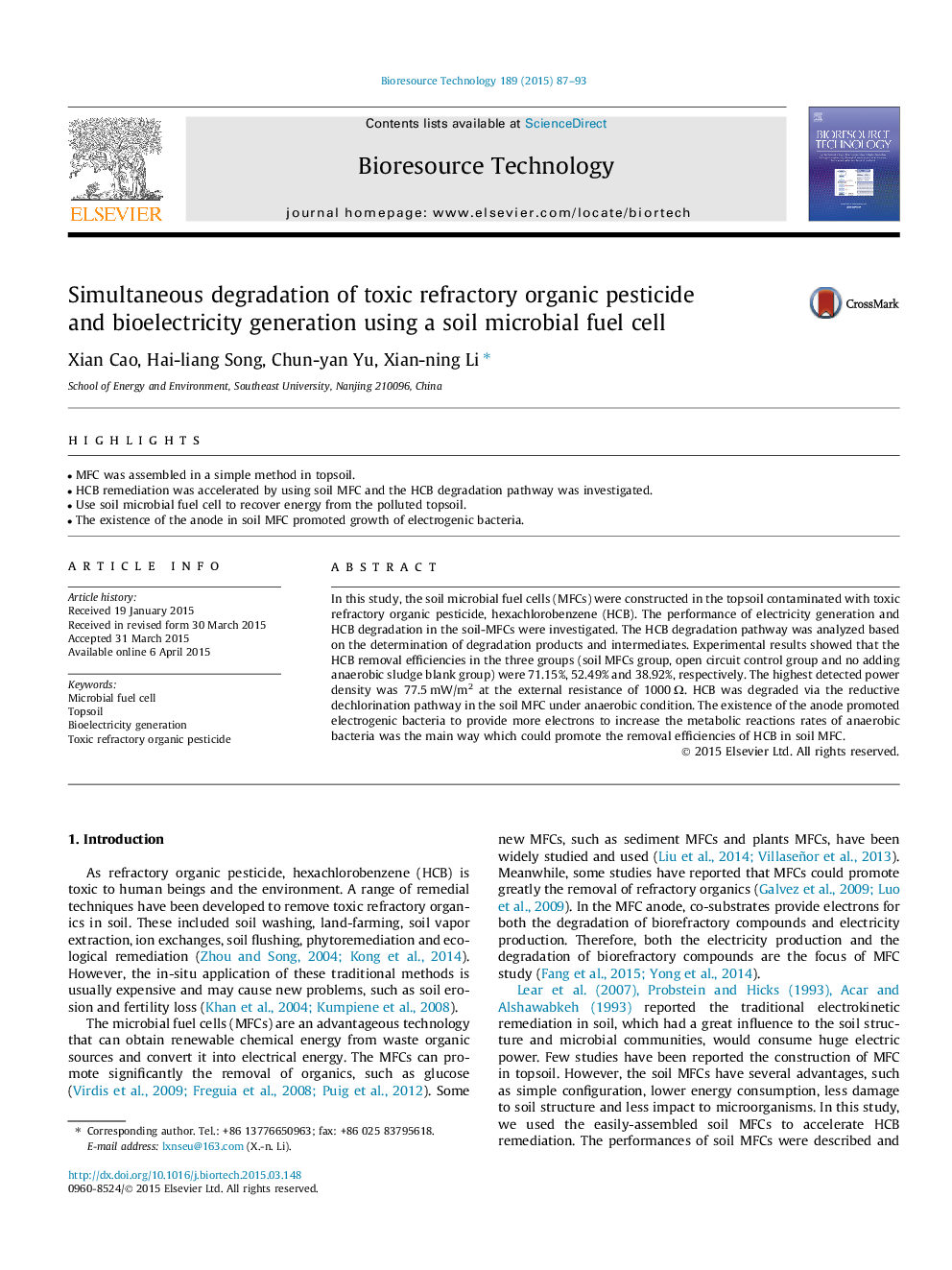| Article ID | Journal | Published Year | Pages | File Type |
|---|---|---|---|---|
| 679760 | Bioresource Technology | 2015 | 7 Pages |
•MFC was assembled in a simple method in topsoil.•HCB remediation was accelerated by using soil MFC and the HCB degradation pathway was investigated.•Use soil microbial fuel cell to recover energy from the polluted topsoil.•The existence of the anode in soil MFC promoted growth of electrogenic bacteria.
In this study, the soil microbial fuel cells (MFCs) were constructed in the topsoil contaminated with toxic refractory organic pesticide, hexachlorobenzene (HCB). The performance of electricity generation and HCB degradation in the soil-MFCs were investigated. The HCB degradation pathway was analyzed based on the determination of degradation products and intermediates. Experimental results showed that the HCB removal efficiencies in the three groups (soil MFCs group, open circuit control group and no adding anaerobic sludge blank group) were 71.15%, 52.49% and 38.92%, respectively. The highest detected power density was 77.5 mW/m2 at the external resistance of 1000 Ω. HCB was degraded via the reductive dechlorination pathway in the soil MFC under anaerobic condition. The existence of the anode promoted electrogenic bacteria to provide more electrons to increase the metabolic reactions rates of anaerobic bacteria was the main way which could promote the removal efficiencies of HCB in soil MFC.
